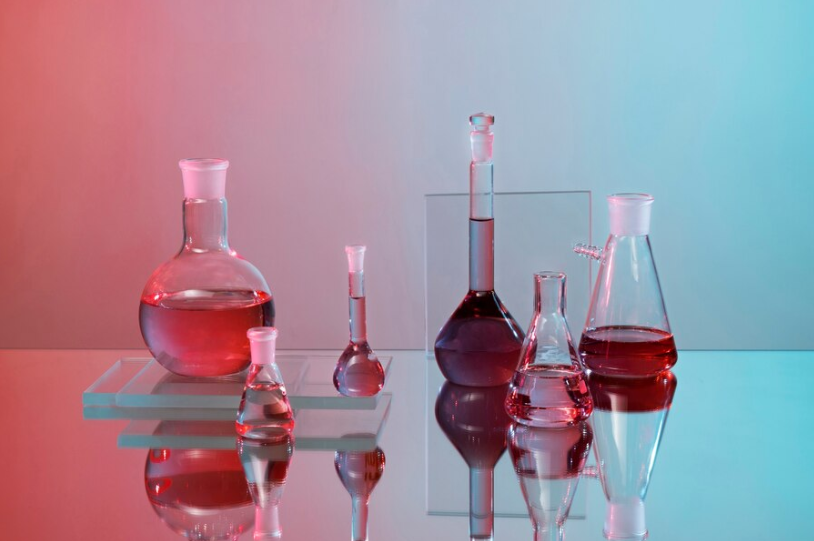What Is Stoichiometry and Why Is It Useful?
Written by SlyAcademy Team
Table of Contents
- Introduction to Stoichiometry
- Key Concepts for Mastering Stoichiometry
- Understanding Mole Ratios
- Example Stoichiometry Problems
- General Steps to Solving Stoichiometry Problems
- Practice Problems
- Conclusion
Introduction to Stoichiometry
Stoichiometry is the quantitative analysis of chemical reactions. By applying the principles of stoichiometry, chemists can accurately predict the amount of reactants needed and the products formed. While it may seem like a lot of complex math at first, with practice, you can become confident and proficient at using stoichiometric calculations for various chemical processes. Let’s break down what makes stoichiometry essential for understanding chemical reactions.
Key Concepts for Mastering Stoichiometry
Balanced Chemical Equations
A balanced chemical equation is fundamental to stoichiometry. It displays the reactants and products, ensuring that the number of atoms of each element is conserved on both sides, reflecting the law of conservation of mass.
Moles and Molar Mass
The mole is a unit used to measure the quantity of a substance, where one mole equals 6.022 x 10^23 particles (Avogadro’s number). The molar mass of a compound, found on the periodic table, tells us the mass of one mole of a substance.
Stoichiometric Coefficients
The coefficients in a balanced chemical equation represent the relative amounts of each substance involved. These coefficients are crucial for calculating mole ratios, which are used to relate the quantities of reactants and products.
Understanding Mole Ratios
Mole ratios allow us to convert between different substances in a reaction. For example, in the reaction C₂H₅OH + 3O₂ → 2CO₂ + 3H₂O, the mole ratio between ethanol (C₂H₅OH) and carbon dioxide (CO₂) is 1:2. This means that for every mole of ethanol burned, two moles of carbon dioxide are produced.
Key Conversions:
- At STP, 1 mole of an ideal gas occupies 22.4 L.
- 1 mole = 6.022 x 10^23 particles (Avogadro’s number).
- Molar mass provides the mass of one mole of a substance.
Example Stoichiometry Problems
Problem 1: Reacting Potassium and Water
Question: How many moles of potassium metal are required to react fully with 11.6 moles of water?
Write the balanced equation:
2K (s) + 2H₂O (l) → 2KOH (aq) + H₂ (g)Identify the given measurement:
Given: 11.6 moles of H₂O.Apply the mole ratio:
The ratio between H₂O and K is 1:1, so 11.6 moles of water requires 11.6 moles of potassium.
Problem 2: Ethanol and Carbon Dioxide
Question: If you have 105.2g of ethanol (C₂H₅OH), what is the maximum volume of carbon dioxide that can form at STP?
Write the balanced equation:
C₂H₅OH (l) + 3O₂ (g) → 2CO₂ (g) + 3H₂O (l)Convert grams to moles:
- Molar mass of C₂H₅OH = 2(12.01) + 6(1.008) + 16.00 = 46.07 g/mol.
- 105.2 g / 46.07 g/mol = 2.28 moles of ethanol.
Use the mole ratio:
- 1 mole of ethanol produces 2 moles of CO₂.
- 2.28 moles of ethanol produces 2.28 x 2 = 4.56 moles of CO₂.
Convert moles to volume at STP:
- 1 mole of gas at STP = 22.4 L.
- 4.56 moles x 22.4 L/mole = 102.2 L of CO₂.
General Steps to Solving Stoichiometry Problems
- Write and balance the chemical equation.
- Identify known quantities.
- Convert known quantities to moles, if necessary.
- Use mole ratios to relate substances.
- Perform any additional conversions.
- Double-check units and calculations.
Practice Problems
- How many particles of BrF are produced from 160.0g of Br₂?
Hint: Use the molar mass of Br₂ to convert to moles, then the stoichiometric ratio, and finally Avogadro’s number to find the number of particles.
Conclusion
Stoichiometry is an indispensable tool for quantifying chemical reactions and ensuring accurate measurements in the lab. By mastering mole ratios, balanced equations, and conversion factors, you’ll be able to tackle any stoichiometric calculation with ease.







